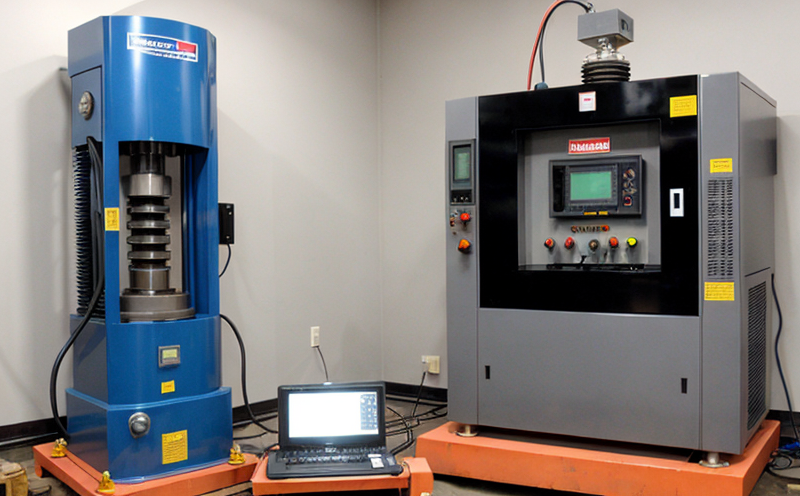DIN EN 2591 403 Vibration Test for Aerospace Components
The DIN EN 2591:2008-10 standard, specifically Part 403 - Vibration testing of mechanical components, is a crucial method in aerospace manufacturing and quality assurance. This test ensures that aerospace components can withstand the harsh environmental conditions they are likely to encounter during flight operations. The primary objective is to evaluate the ability of these parts to maintain their structural integrity, performance, and reliability under dynamic loading scenarios.
The vibration testing protocol involves subjecting specimens to controlled environments mimicking real-world conditions such as atmospheric turbulence, engine vibrations, and landing impacts. These tests are particularly important for components like airframe structures, propulsion systems, and avionics assemblies that must operate reliably in extreme conditions.
Preparing the specimen for this test requires precise engineering techniques to ensure accurate representation of real-world scenarios. This involves attaching accelerometers to sensitive areas of the component to measure displacement, velocity, and acceleration. The test setup typically includes a shake table or vibration testing machine capable of generating complex sine waveforms that simulate various flight phases.
The DIN EN 2591:403 standard specifies detailed procedures for conducting these tests, including frequency ranges, amplitude levels, and duration times tailored to the specific application. For instance, airframe structures might undergo low-frequency, high-amplitude tests to assess their resilience against landing impacts, while more sensitive components like avionics may require higher frequency, lower amplitude simulations.
Once testing is complete, engineers analyze the data collected from accelerometers and other sensors to determine if any structural damage or performance degradation has occurred. Compliance with this standard ensures that aerospace parts meet stringent quality control requirements set by aviation authorities such as the Federal Aviation Administration (FAA), European Union Aviation Safety Agency (EASA), and others.
Understanding the broader context of mechanical shock & vibration testing in electronics is essential for appreciating its significance within the aerospace industry. Aerospace components operate under some of the harshest environmental conditions found anywhere on Earth, making robust quality assurance processes critical. By adhering to standards like DIN EN 2591:403, manufacturers can ensure that their products not only meet but exceed expectations in terms of reliability and durability.
| Applied Standards | Description |
|---|---|
| DIN EN 2591:2008-10, Part 403 | Vibration testing of mechanical components for aerospace applications. |
| ISO 17650 Series | General guidelines for the design and qualification of aircraft structures. |
| American Society for Testing and Materials (ASTM) | Standards related to mechanical testing methods. |
Applied Standards
- DIN EN 2591:2008-10, Part 403 - Vibration testing of mechanical components for aerospace applications.
- ISO 17650 Series - General guidelines for the design and qualification of aircraft structures.
- American Society for Testing and Materials (ASTM) standards related to mechanical testing methods.
The DIN EN 2591:403 standard is pivotal in aerospace manufacturing, providing precise protocols for evaluating how well components can endure vibration stresses. This ensures that each part meets the stringent requirements necessary for safe and reliable performance during flight operations.
Quality and Reliability Assurance
Ensuring quality and reliability through DIN EN 2591:403 testing involves several key practices aimed at minimizing errors and enhancing consistency. One important aspect is the accurate calibration of test equipment to ensure consistent measurement results across all tests.
- Calibration: Regularly calibrate all vibration testing machines according to manufacturer specifications using traceable standards.
- Data Collection: Implement robust data logging systems capable of recording high-resolution time-series data during each test run.
- Analytical Methods: Utilize advanced analytical techniques such as spectral analysis and modal analysis to interpret collected data accurately.
- Repeatability Checks: Conduct repeated tests under identical conditions to verify that variations in results are due to environmental factors rather than equipment inaccuracies or human error.
By adhering strictly to these practices, laboratories can provide confidence that the test results accurately reflect the true performance capabilities of aerospace components. This approach not only enhances product quality but also contributes significantly towards maintaining public trust in aviation safety standards worldwide.
International Acceptance and Recognition
The DIN EN 2591:403 standard is widely recognized within the international community for its stringent requirements regarding vibration testing of aerospace components. Many countries, including those represented by organizations like EASA, FAA, and CAA, have adopted this standard as part of their regulatory frameworks.
One reason for its global acceptance lies in its comprehensive approach to simulating real-world conditions that could affect flight safety. By following these guidelines closely during manufacturing processes, manufacturers can ensure that every component undergoes thorough evaluation before being certified for use in commercial aviation or space exploration projects.
In addition to regulatory compliance, adhering to such standards also helps companies maintain a competitive edge by demonstrating their commitment to excellence in product development and quality assurance. This is especially true given the increasingly stringent demands placed upon manufacturers operating within highly regulated industries like aerospace.





